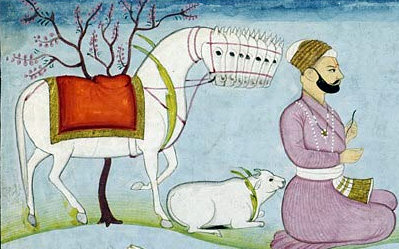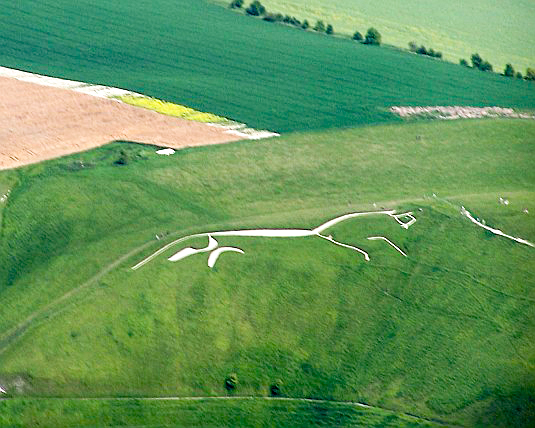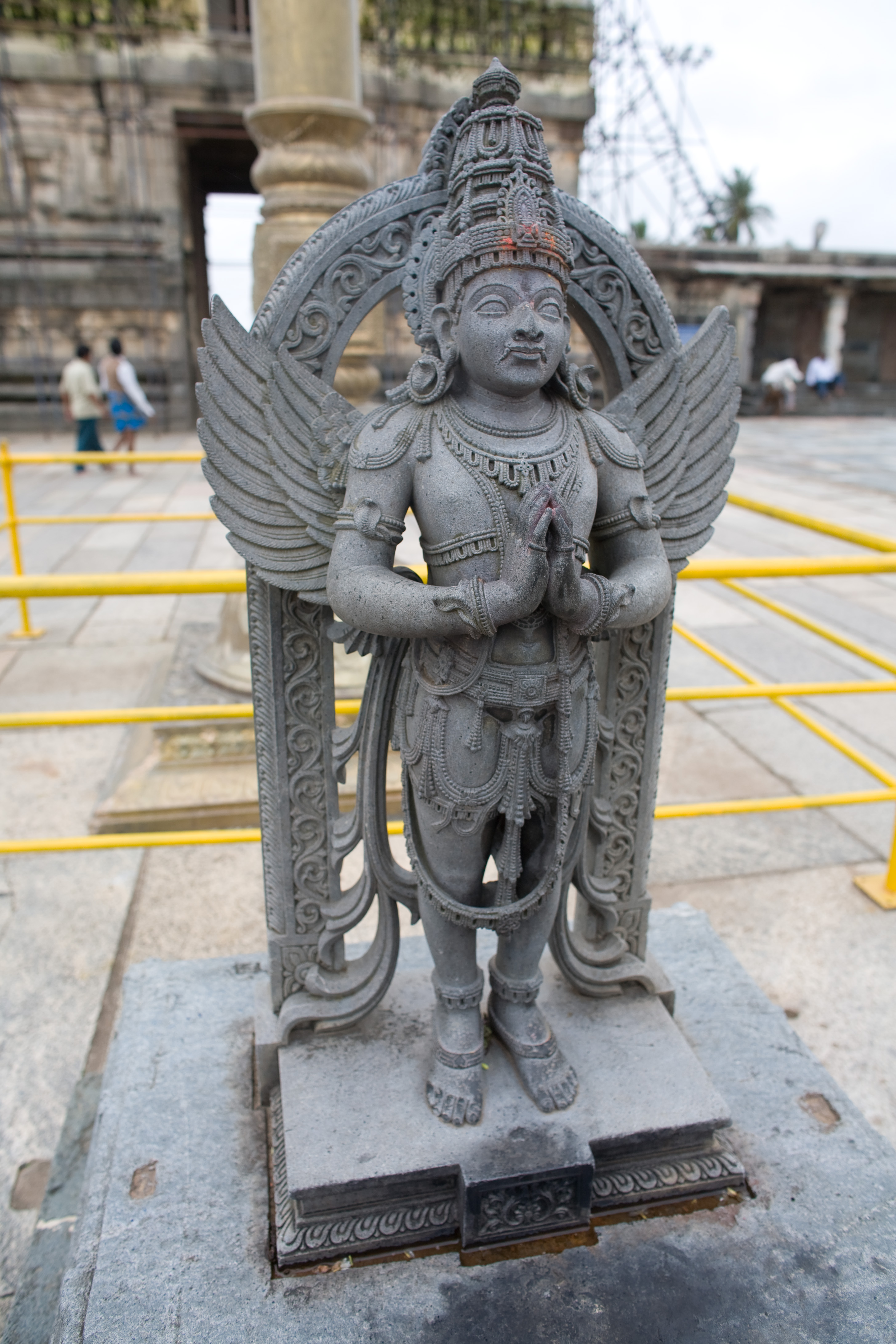|
Uchaishravas
In Hinduism, Uchchaihshravas (, or , ), () is a seven-headed flying horse, created during the churning of the ocean. It is considered the best of horses, as prototype and king of the horses. Uchchaihshravas is often described as a ''vahana'' of Indra, but is also recorded to be the horse of Bali, the king of the asuras. Uchchaihshravas is said to be snowy white in colour. Literature Mahabharata The ''Mahabharata'' mentions that Uchchaihshravas rose from the Samudra Manthana ("churning of the milk ocean") and Indra—the god-king of heaven—seized it and made it his vehicle (vahana). The stallion rose from the ocean along with other treasures like goddess Lakshmi - the goddess of fortune, who chose Vishnu as her consort, and the amrita - the elixir of life. The legend of Uchchaihshravas, rising from the milk ocean, also appears in the ''Vishnu Purana'', the ''Ramayana'', the ''Matsya Purana'', the ''Vayu Purana'' etc. While various sources list different treasures (''ratna ... [...More Info...] [...Related Items...] OR: [Wikipedia] [Google] [Baidu] |
White Horses In Mythology
White horses have a special significance in the mythologies of cultures around the world. They are often associated with the sun chariot,''The Complete Dictionary of Symbols'' by Jack Tresidder, Chronicle Books, 2005, , page 241Google books copy/ref> with warrior-heroes, with fertility (in both mare and stallion manifestations), or with an end-of-time saviour, but other interpretations exist as well. Both truly white horses and the more common grey horses, with completely white hair coats, were identified as "white" by various religious and cultural traditions. Portrayal in myth From earliest times, white horses have been mythologised as possessing exceptional properties, transcending the normal world by having wings (e.g. Pegasus from Greek mythology), or having horns (the unicorn). As part of its legendary dimension, the white horse in myth may be depicted with seven heads ( Uchaishravas) or eight feet (Sleipnir), sometimes in groups or singly. There are also white horse ... [...More Info...] [...Related Items...] OR: [Wikipedia] [Google] [Baidu] |
Svarga
Svarga (, ), also known as Swarga, Indraloka and Svargaloka, is the celestial abode of the devas in Hinduism. Svarga is one of the seven higher lokas ( esoteric planes) in Hindu cosmology. Svarga is often translated as heaven, though it is regarded to be dissimilar to the concept of the Abrahamic Heaven. Description Svarga is a set of celestial worlds located on and above Mount Meru, where those who had led righteous lives by adhering to the scriptures delight in pleasures, before their next birth on earth. It is described to have been built by the deity Tvashtar, the Vedic architect of the devas. The king of the devas, Indra, is the ruler of Svarga, ruling it with his consort, Indrani. His palace in the abode is called Vaijayanta. This palace holds the famous hall, Sudharma, unrivalled among all the princely courts. The capital of Svarga is Amaravati, and its entrance is guarded by the legendary elephant, Airavata. Svarga is described to be the home of Kamadhenu, the c ... [...More Info...] [...Related Items...] OR: [Wikipedia] [Google] [Baidu] |
Vishnu Purana
The Vishnu Purana () is one of the eighteen Mahapuranas, a genre of ancient and medieval texts of Hinduism. It is an important Pancharatra text in the Vaishnavism literature corpus. The manuscripts of ''Vishnu Purana'' have survived into the modern era in many versions. More than any other major Purana, the ''Vishnu Purana'' presents its contents in ''Pancalaksana'' format – ''Sarga'' (cosmogony), ''Pratisarga'' (cosmology), ''Vamsa'' (genealogy of the gods and goddesses, sages and kings and queens), ''Manvantara'' (cosmic cycles), and ''Vamsanucarita'' (legends during the times of various kings and queens). Some manuscripts of the text are notable for not including sections found in other major Puranas, such as those on ''Mahatmyas'' and tour guides on pilgrimage, but some versions include chapters on temples and travel guides to sacred pilgrimage sites. The text is also notable as the earliest Purana to have been translated and published in 1840 CE by HH Wilson, based ... [...More Info...] [...Related Items...] OR: [Wikipedia] [Google] [Baidu] |
Prithu
Prithu (Sanskrit: पृथु, ''Pṛthu'', lit. "large, great, important, abundant") is a sovereign ( chakravarti), featured in the Puranas. According to Hinduism, he is an avatar (incarnation) of the preserver god—Vishnu. He is also called Prithu, Prithi and Prithvi Vainya, literally, "Prithu — the son of Vena". Prithu is "celebrated as the first consecrated king, from whom the earth received her (Sanskrit) name, Prithvi." He is mainly associated with the legend of his chasing the earth goddess, Prithvi, who fled in the form of a cow and eventually agreed to yield her milk as the world's grain and vegetation. The epic Mahabharata, Vishnu Purana, and the Bhagavata Purana describe him as a part-avatar (incarnation) of Vishnu.Singh p.1713 Legends The birth of Prithu is without female reproduction. Thus being a ''ayonija'' ("born without (the participation) of the yoni"), Prithu is untouched by desire and ego and can thus control his senses to rule with dharma. ... [...More Info...] [...Related Items...] OR: [Wikipedia] [Google] [Baidu] |
Arjuna
Arjuna (, , Help:IPA/Sanskrit, [ɐɾd͡ʒun̪ə]) is one of the central characters of the ancient Hindu epic ''Mahabharata''. He is the third of the five Pandava brothers, and is widely regarded as the most important and renowned among them. He is the son of Indra, the king of the Deva (Hinduism), gods, and Kunti, wife of King Pandu of Kuru kingdom, Kuru dynasty—making him a Demigod, divine-born hero. Arjuna is famed for his extraordinary prowess in archery and mastery over Astra (weapon), celestial weapons. Throughout the epic, Arjuna sustains a close friendship with his maternal cousin, Krishna, who serves as his spiritual guide. Arjuna is celebrated for numerous heroic exploits throughout the epic. From childhood, he emerges as an excellent pupil, studying under the warrior-sage Drona. In his youth, Arjuna wins the hand of Draupadi, the princess of the Pañcāla, Panchalas, by excelling in a formidable archery competition. Soon after, he goes on a journey during a period ... [...More Info...] [...Related Items...] OR: [Wikipedia] [Google] [Baidu] |
Krishna
Krishna (; Sanskrit language, Sanskrit: कृष्ण, ) is a major deity in Hinduism. He is worshipped as the eighth avatar of Vishnu and also as the Supreme God (Hinduism), Supreme God in his own right. He is the god of protection, compassion, tenderness, and love; and is widely revered among Hindu divinities. Krishna's birthday is celebrated every year by Hindus on Krishna Janmashtami according to the lunisolar calendar, lunisolar Hindu calendar, which falls in late August or early September of the Gregorian calendar. The anecdotes and narratives of Krishna's life are generally titled as ''Krishna Līlā''. He is a central figure in the ''Mahabharata'', the ''Bhagavata Purana'', the ''Brahma Vaivarta Purana,'' and the ''Bhagavad Gita'', and is mentioned in many Hindu philosophy, Hindu philosophical, Hindu theology, theological, and Hindu mythology, mythological texts. They portray him in various perspectives: as a god-child, a prankster, a model lover, a divine hero, ... [...More Info...] [...Related Items...] OR: [Wikipedia] [Google] [Baidu] |
Bhagavad Gita
The Bhagavad Gita (; ), often referred to as the Gita (), is a Hindu texts, Hindu scripture, dated to the second or first century BCE, which forms part of the Hindu epic, epic poem Mahabharata. The Gita is a synthesis of various strands of Indian religious thought, including the Vedic concept of ''dharma'' (duty, rightful action); samkhya-based ''yoga'' and ''jnana'' (knowledge); and ''bhakti'' (devotion). Among the Hindu denominations, Hindu traditions, the text holds a unique pan-Hindu influence as the most prominent sacred text and is a central text in Vedanta and the Vaishnava, Vaishnava Hindu tradition. While traditionally attributed to the sage Veda Vyasa, the Gita is historiographically regarded as a composite work by multiple authors. Incorporating teachings from the Upanishads and the samkhya Yoga (philosophy), yoga philosophy, the Gita is set in a narrative framework of dialogue between the pandava prince Arjuna and his charioteer guide Krishna, an avatar of Vishnu, a ... [...More Info...] [...Related Items...] OR: [Wikipedia] [Google] [Baidu] |
Kamadhenu Uchchaisravas
Kamadhenu (, , ), also known as Surabhi (, or , ), is a divine bovine-goddess described in Hinduism as the mother of all cows. She is a miraculous cow of plenty who provides her owner whatever they desire and is often portrayed as the mother of other cattle. In iconography, she is generally depicted as a white cow with a female head and breasts, the wings of a bird, and the tail of a peafowl or as a white cow containing various deities within her body. Kamadhenu is not worshipped independently as a goddess. Rather, she is honored by the Hindu veneration of cows, who are regarded as her earthly embodiments. Hindu scriptures provide diverse accounts of the birth of Kamadhenu. While some narrate that she emerged from the churning of the cosmic ocean, others describe her as the daughter of the creator god Daksha, and as the wife of the sage Kashyapa. Still other scriptures narrate that Kamadhenu was in the possession of either Jamadagni or Vashista (both ancient sages), and that ... [...More Info...] [...Related Items...] OR: [Wikipedia] [Google] [Baidu] |
Nāga
In various Asian religious traditions, the Nāgas () are a divine, or semi-divine, race of half-human, half-serpent beings that reside in the netherworld (Patala), and can occasionally take human or part-human form, or are so depicted in art. Furthermore, nāgas are also known as Dragon, dragons and Water spirit, water spirits. A female nāga is called a Nagin, or a Naiṇī Devī, Nagini. According to legend, they are the children of the sage Kashyapa and Kadru. Rituals devoted to these supernatural beings have been taking place throughout South Asia for at least 2,000 years. They are principally depicted in three forms: as entirely human with snakes on the heads and necks, as common serpents, or as half-human, half-snake beings in Hinduism and Buddhism. ''Nagaraja'' is the title given to the king of the nāgas. Narratives of these beings hold cultural significance in the mythological traditions of many South Asian and Southeast Asian cultures, and within Hinduism and Buddhism ... [...More Info...] [...Related Items...] OR: [Wikipedia] [Google] [Baidu] |
Aruṇa
Aruna () is the charioteer of Surya (the sun god) in Hinduism. He is the elder brother of Garuda. Aruna and Garuda are the sons of Vedic sage Kashyapa and his wife Vinata, daughter of Prajapati Daksha. His children were the mighty vultures Sampati and Jatayu. He is also found in Buddhism and Jainism literature and arts. History Birth Aruna is found in different, inconsistent Indian legends. In the epic Mahabharata,Mani p. 55 he was born prematurely and partially developed from an egg. According to this version, Kashyapa Prajapati's two wives Vinata and Kadru wanted to have children. Kashyapa granted them a boon. Kadru asked for one thousand 'Dirghadeha' (meaning long bodied) Nāga (serpent) sons, while Vinata wanted only two yet extremely strong 'Divyadeha' (meaning emitting golden aura from body), who would excel the thousand sons of Kadru. Kashyapa blessed them, and then went away to a forest. Later, Kadru gave birth to one thousand eggs, while Vinata gave birth to t ... [...More Info...] [...Related Items...] OR: [Wikipedia] [Google] [Baidu] |
Garuda
Garuda (; ; Vedic Sanskrit: , ) is a Hindu deity who is primarily depicted as the mount (''vahana'') of the Hindu god Vishnu. This divine creature is mentioned in the Hindu, Buddhist, and Jain faiths. Garuda is also the half-brother of the Devas, Gandharvas, Daityas, Danavas, Nāgas, Vanara and Yakshas. He is the son of the sage Kashyapa and Vinata. He is the younger brother of Aruna, the charioteer of the Sun. Garuda is mentioned in several other texts such as the Puranas and the Vedas. Garuda is described as the king of the birds and a kite-like figure. He is shown either in a zoomorphic form (a giant bird with partially open wings) or an anthropomorphic form (a man with wings and some ornithic features). Garuda is generally portrayed as a protector with the power to swiftly travel anywhere, ever vigilant and an enemy of every serpent. He is also known as Tarkshya and Vainateya. Garuda is a part of state insignia of India, Indonesia and Thailand. Both Indonesia and ... [...More Info...] [...Related Items...] OR: [Wikipedia] [Google] [Baidu] |
Kadru
Kadru (, ) is usually regarded as the daughter of Daksha and the consort of the sage Kashyapa in Hindu scriptures. Kashyapa is the son of Marichi, who is a manasputra, manasaputra, a mind-born son of Brahma. Kadru is best known as the mother of the nāgas, nagas, the race of serpents. Legends of Kadru detail her relationship with her elder sister Vinata, who was also one of Kashyapa's many wives. In one story, Kadru and Vinata vie to bear the children of Kashyapa who are more powerful than the other. While Kadru gives birth to a thousand nagas, Vinata bears two sons, Aruṇa and Garuda. Kadru is also portrayed as more scheming and wily than Vinata. She challenges Vinata to guess the colour of the tail of Uchchaihshravas, the divine white horse. After Vinata says the tail is white, Kadru tricks Vinata by directing her sons to coil around the horse's tail, causing it to appear black. As a result, Vinata loses the bet and she and her sons are forced to become the slaves of Kadru ... [...More Info...] [...Related Items...] OR: [Wikipedia] [Google] [Baidu] |









